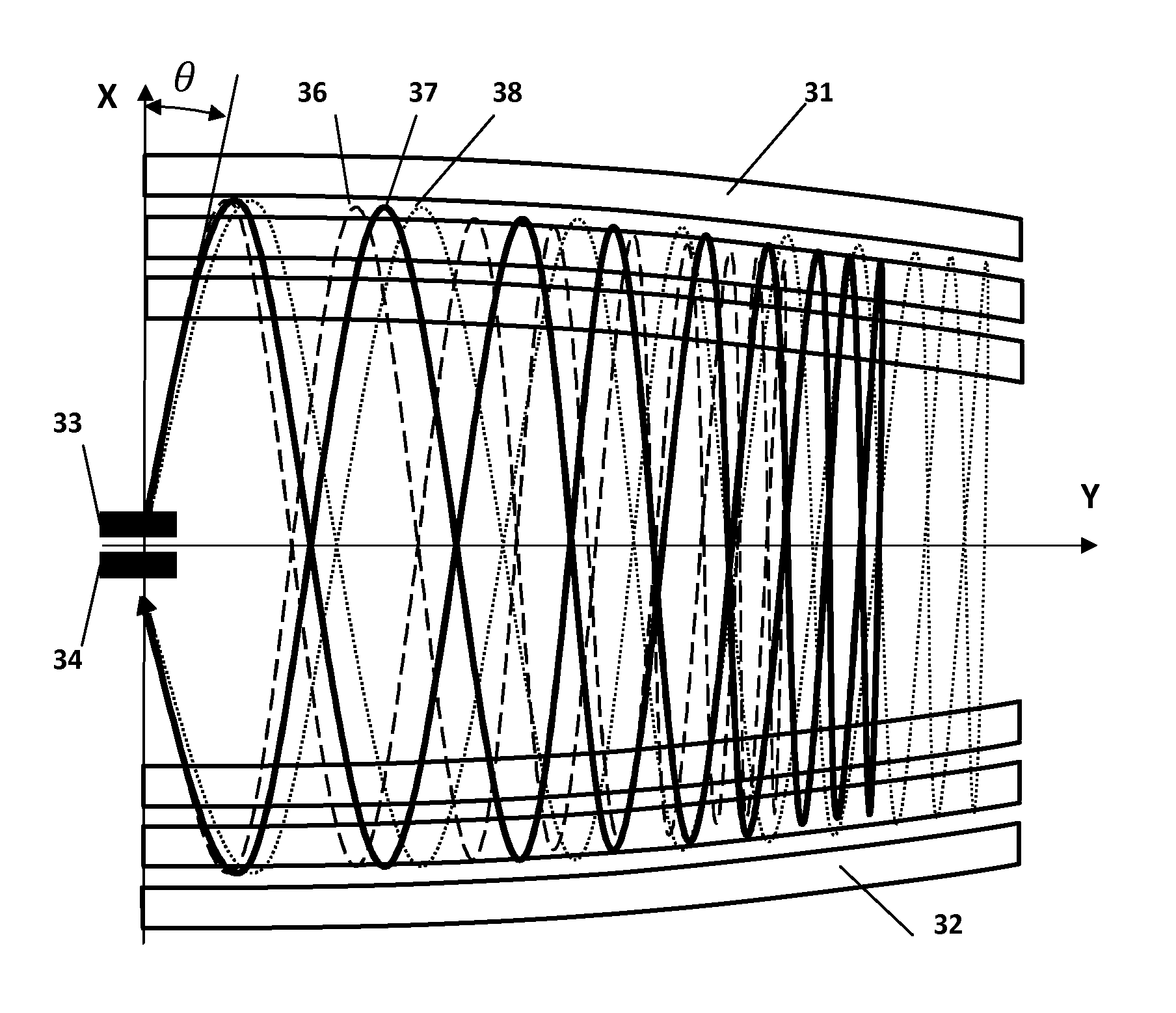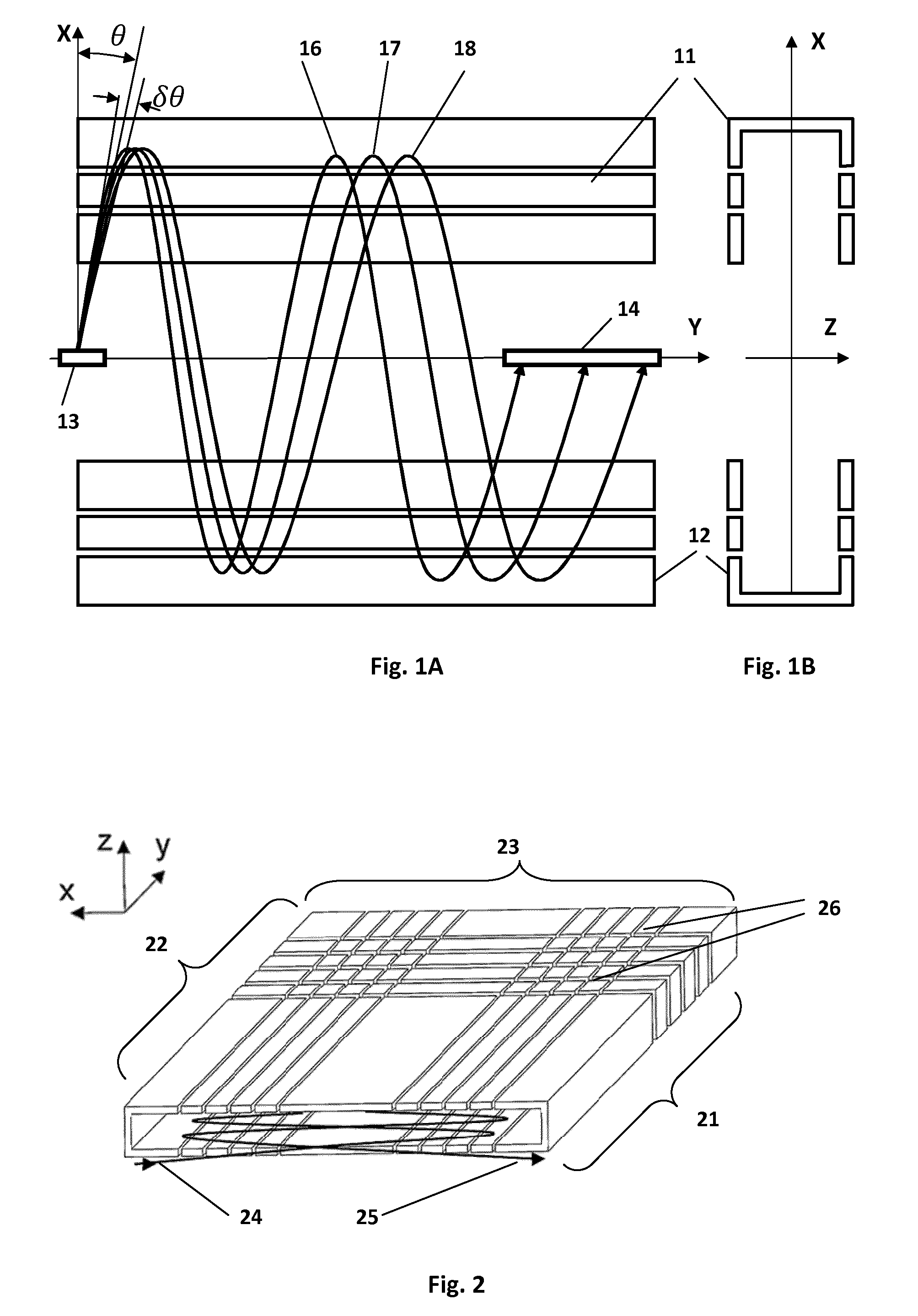Multi-reflection mass spectrometer
a mass spectrometer and multi-reflection technology, applied in mass spectrometers, spectrometer combinations, particle separator tubes, etc., can solve the problems of loss of sensitivity, further increase of ion flight time, and lack of any means to prevent beam divergence in the drift direction
- Summary
- Abstract
- Description
- Claims
- Application Information
AI Technical Summary
Benefits of technology
Problems solved by technology
Method used
Image
Examples
Embodiment Construction
[0092]Various embodiments of the present invention will now be described by way of the following examples and the accompanying figures.
[0093]FIG. 1A and FIG. 1B are schematic diagrams of a multi-reflection mass spectrometer comprising parallel ion-optical mirrors elongated linearly along a drift length, illustrative of prior art analysers. FIG. 1A shows the analyser in the X-Y plane and FIG. 1B shows the same analyser in the X-Z plane. Opposing ion-optical mirrors 11, 12 are elongated along a drift direction Y and are arranged parallel to one another. Ions are injected from ion injector 13 with angle θ to axis X and angular divergence δθ, in the X-Y plane. Accordingly, three ion flight paths are depicted, 16, 17, 18. The ions travel into mirror 11 and are turned around to proceed out of mirror 11 and towards mirror 12, whereupon they are reflected in mirror 12 and proceed back to mirror 11 following a zigzag ion flight path, drifting relatively slowly in the drift direction Y. After...
PUM
 Login to View More
Login to View More Abstract
Description
Claims
Application Information
 Login to View More
Login to View More - R&D
- Intellectual Property
- Life Sciences
- Materials
- Tech Scout
- Unparalleled Data Quality
- Higher Quality Content
- 60% Fewer Hallucinations
Browse by: Latest US Patents, China's latest patents, Technical Efficacy Thesaurus, Application Domain, Technology Topic, Popular Technical Reports.
© 2025 PatSnap. All rights reserved.Legal|Privacy policy|Modern Slavery Act Transparency Statement|Sitemap|About US| Contact US: help@patsnap.com



